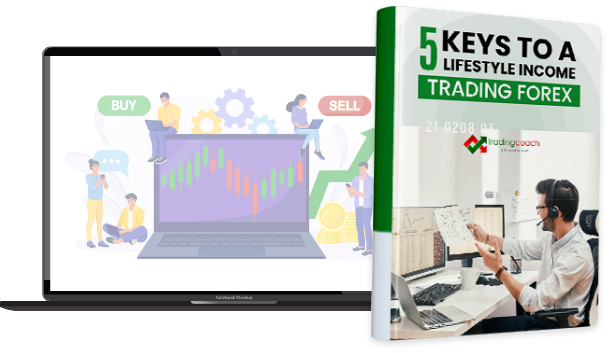The Rules Are Changing for Australian Traders… And Time Is Running Out

If you’ve been watching the markets or trying to build a trading side hustle in Australia, you may have noticed something shifting.
The rules are changing — and they’re not changing in favour of the everyday Aussie trader.
Recent adjustments to professional trader leverage rules and signs from ASIC suggest that trading in Australia is becoming more regulated, more restricted, and less accessible for the average person.
If you’re serious about replacing your income through trading,,, or even just building a second income stream, the time to act is now. Because soon, it might not be possible.
What’s Actually Changed?
Let’s start with the most recent and significant development:
Professional traders in Australia no longer get to choose their fixed leverage.
Previously, if you qualified as a pro trader, you could select 100:1, 200:1, 400:1 or even 500:1 leverage, depending on your preference and risk profile.
But under new changes, leverage is now dynamic and automatic… scaling with the size of your trade:
- 2000:1 leverage is available for trades up to 1 full contract
- That leverage decreases steadily as your position size increases
- Functional leverage for most individuals will be 500:1 for between 5 & 100 contracts
- Once you hit 500 contracts, the available leverage drops to 10:1 (lower than retail leverage)
It’s a complete overhaul of how pro traders can operate — and it rewards Compliance, Precision and Efficiency, not overscaling and aggression.
At first glance, this might sound like a minor policy tweak for high-volume pros.
But it’s much more than that.
A Warning Sign for Retail Traders
Why does this matter if you’re not a pro yet?
Because it’s a clear signal from regulators. A test run.
A similar shift in retail leverage rules could be coming… and if it does, it could push 90–95% of Australian retail traders out of the market altogether.
Let’s look at the trend.
In March 2021, ASIC already slashed retail leverage dramatically:
- Forex: from 500:1 (average 100:1) down to 30:1 for all retail traders
- Commodities: down to 20:1
- Index CFDs: 10:1
- Shares: just 5:1
That change forced thousands of traders to either:
- Dramatically reduce their position sizes (less income),
- Add more margin (more capital), or
- Quit trading altogether.
Now, with this dynamic leverage model being introduced at the professional level, there’s a strong chance ASIC may roll it out more broadly in an effort to “protect” retail traders — whether they want that protection or not.
Real People. Real Consequences.
Jason, 39 — Adelaide
Jason had built a steady side income from forex trading over five years.
After the 2021 leverage cuts, his results started to flatten.
“I used to trade mini lots and manage risk with tight stops. But after the change, I needed more capital just to open the same trades,” he says. “It killed my momentum.”
He considered applying for a professional account but didn’t meet the income and asset threshold, or the activity requirement.
When he saw the new dynamic leverage announcement, he said:
“If they drop the leverage more for retail traders too, I’m out. The numbers just won’t work anymore.”
Mel, 44 — Gold Coast
Mel was retrenched from her hospitality management role during COVID.
She used the time to study trading, hoping to build a long-term income stream she could manage from home.
“I was just getting confident. Then I saw all these leverage restrictions, new paperwork, and platform requirements,” she explains. “It’s like the door was closing right when I was ready to walk through.”
She joined a coaching program and is now working towards pro trader qualification — before the rules shift again.
Why It’s Getting Harder to Build a Full-Time Income
For most people, replacing their job income through trading takes time, structure, and support.
You don’t just jump into the markets and make money consistently.
But the increasing regulations: tighter leverage, stricter margin requirements, and fewer high-risk tools, mean that path is getting narrower.
Let’s break it down:
- Smaller leverage = smaller position sizes
- Smaller positions = smaller potential profit per trade
- That means you need more capital or more time to hit consistent income targets
- And fewer people will meet the eligibility requirements to go pro
Translation: If you’re not already building the foundations now… you may not be allowed to later.
What ASIC Isn’t Saying Out Loud
ASIC is doing what regulators are supposed to do — protecting retail traders from excessive risk.
But let’s be honest…
They’re not just managing risk — they’re limiting opportunity.
And what they’re not saying out loud is what you really need to hear.
1. Retail Leverage Could Be Cut Even Further
Back in 2021, ASIC dropped the maximum leverage for retail traders from 500:1 down to 30:1 for forex pairs — and even lower for other products. They said it was to protect everyday traders from blowing up their accounts.
But here’s the thing:
Once a regulator makes one restriction… they rarely stop there.
If the new dynamic leverage model works at the pro level, it’s only a matter of time before ASIC begins considering a similar model for retail traders.
That could mean:
- Lower leverage for smaller accounts (90% of Aussie Traders)
- Dynamic risk-weighted caps based on trade size (Penalising those who want a full time income)
- Limits on access to certain instruments altogether (Restricting access to your favourite market)
This would dramatically reduce the ability of everyday traders to grow their accounts — especially those with less than $10,000 starting capital.
In short, it could lock out the average Australian from ever turning trading into something meaningful.
2. The Pathway From Retail to Pro Could Be Closed Off
Right now, there’s a clear path for committed traders to go pro.
To qualify as a professional trader under ASIC guidelines, you must meet two out of following criteria:
- Have traded a significant size and volume over the past year
- Have worked in the financial services industry
- Have a projected earnings of $100,000 p.a. plus
- Hold a portfolio of over $500,000 in liquid assets
That’s already a high bar for many Australians.
But here’s the kicker: ASIC has already floated the idea of tightening this further.
They may:
- Increase the minimum portfolio requirement
- Require proof of professional certification
- Eliminate self-certification and introduce stricter audits
That means if you’re not already progressing down the path to pro status — or working under a structured plan like LIFT — the door could close entirely in the near future.
No warnings. No second chances.
3. Retail Traders Are Being Nudged Out Quietly
If you look at the trend, it’s clear:
- Leverage has been reduced: even for traders who have shown they can trade professionally
- Margin requirements are increasing
- Retail traders are being funnelled into simplified (lower return) products like ETFs or micro CFDs
- Advanced platforms and order types are being limited to professionals
In other words, retail traders are being quietly nudged out of the serious game.
The only people ASIC truly wants trading with flexibility, scale, and strategy…
Are the institutions, banks, and licensed professionals (you know, the ones who don’t pay a lot of tax…).
Everyone else?
They’d prefer you stick to passive investing or capped platforms — where you’re limited, controlled, and easy to monitor.
The Pathway Is Still Open — For Now
Here’s the good news.
You can still qualify for pro trader status in Australia. You can still access advanced tools, flexible leverage, and faster execution, but only if you act before the door closes.
At The Trading Coach International, we work with everyday people from all walks of life — engineers, teachers, tradies, small business owners… and help them build a Real, Repeatable income through trading.
Through one of our LIFT programs, you’ll follow a structured pathway to:
- Learn how the markets really work
- Build a personal trading system based on your lifestyle
- Apply smart risk management from day one
- Qualify for better trading conditions and pro-level support
Why LIFT Works
LIFT isn’t a trading course.
It’s a mentorship and coaching program designed to move you step by step toward full-time, AI-proof income from trading.
You’ll get:
- Three updated digital handbooks, covering risk management, mindset and technical analysis plus more…
- On Demand Self-Paced Online Training video library
- One-on-one Zoom Coaching Calls with our Lead Trading Coach to suit your needs
- Real accountability from real traders and coaches who’ve been where you are
And most importantly, we’ll help you set up a system that works with your time, your risk tolerance, and your financial goals.
Many of our students replace their full-time incomes in as little as 24 months.
Some faster and Some are still working on it.
But none of them waited until the system shut them out.
The Window Is Closing
Regulators won’t announce the final warning. They’ll just change the rules — again.
By the time the next round of restrictions hits, it may be too late to:
- Qualify for pro trader status
- Trade with useful leverage
- Or access the tools you need to grow consistently
But right now — today — the path is still open.
The only question is whether you’ll walk it.
Don’t Get Left Behind
If you’ve ever thought about turning your trading into something more —
If you’ve ever imagined walking away from your job because you created your own income stream —
Now is the time to act.
Because the truth is this:
The retail trading landscape in Australia is changing.
It’s becoming harder, not easier.
And only those who prepare now will have the chance to thrive later.
and find out how the LIFT program can help you secure your trading future — while you still can.
Disclaimer
Trading forex involves risk and may not be suitable for all investors. Past performance is not indicative of future results. Always conduct your own research before trading.
The information, strategies, techniques and approaches discussed in this article are for general information purposes only. The Trading Coach International does not necessarily use, promote nor recommend any strategies discussed in this article. The information in this article may not be suitable for your personal financial circumstances and you should seek independent qualified financial advice before implementing any financial strategy. The Trading Coach International is not a financial advisor and does not have AFS registration.


















